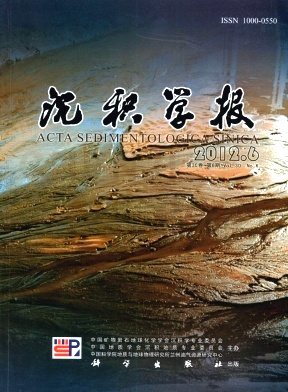Discussions on Feasibility of Paleosalinity Reconstruction of Lake Qinghai Water by Variations in Body Length of Ostracod Valves
- Publish Date: 2012-12-10
-
Key words:
- hardwater effect
Abstract: Lake Qinghai, the largest closedbasin brackish lake in China, is located in the northeastern margin of Tibetan Plateau. The authors studied a 475 cm long sediment core (QH2005) retrieved from the southeastern part of Lake Qinghai. The six chronological constraints for core QH2005 include: four 14C dates on bulk organic carbon (BOC) and two on lignin. The inferred changing "lake reservoir effect" was used to correct the older BOC dates. The corrected BOC dates, together with the lignin dates were converted into calendar ages to yield the "depthage" model for core QH2005. We randomly collected adult ostracod (Limnocythere inopinata or Eucypris inflata) valves from the sediment and measured the body length for 30 L. inopinata valves, which were later statistically processed to yield its average value. For sections without enough L. inopinata valves in core QH2005, E. inflata valves were used to instead. In addition, sediment redness was also determined for Core QH2005. Ostracod δ18O values for Core QH2005 were revealed to be mainly related to dilution and evaporative enrichment of the lake water and hence can be further used to indicate enhanced monsoonal precipitation of Lake Qinghai area when negative ostracod δ18O values were observed. High redness values indicate increased riverine supply to Lake Qinghai associated with increased monsoon rainfall. The results of ostracod δ18O and redness show that: climate during 13,500~10,900 cal a BP was relatively cold and dry with frequent shortterm fluctuations; warm and wet climate began at about 10 900 cal a BP and culminated around 6 500 cal a BP as a result of monsoon strengthening; climate became cold and dry afterwards and has remained relatively stable since 3 400 cal a BP. The reconstructed salinity based on ostracod body length coincides well with the above changing pattern. Generally, the reconstructed lake water salinity shows evident decreasing trend with considerable fluctuations in late glacial, synchronous to the amelioration of monsoon climate; the salinity displays overall increasing trend since late Holocene, coinciding with the deduced deterioration of monsoon climate. However, on millennial/centennial timescales, the paleosalinity based on ostrocad body length is not in accord with the shortterm climatic fluctuations (including: icerafting events 4, 3 and 2 (by ~5 900 cal a BP, ~4 300 cal a BP and ~3 100 cal a BP respectively) and Little Ice Age (by ~500 cal a BP)) deduced by ostracod δ18O and redness results. We speculate that lake water salinity was one of the most important factors influencing the L. inopinata body length, but not necessarily the only one factor. Other factors including water temperature, water depth and water chemical composition could as well exert certain influences on the microhabitat of ostracod and hereby in turn give rise to changes in ostracod body length. Therefore more studies are needed to make clear the mechanism of environmental factors influencing ostracod body length before it can be used to reconstruct environmental variables.
| Citation: | Discussions on Feasibility of Paleosalinity Reconstruction of Lake Qinghai Water by Variations in Body Length of Ostracod Valves[J]. Acta Sedimentologica Sinica, 2012, 30(6): 1072-1079. |






 DownLoad:
DownLoad: